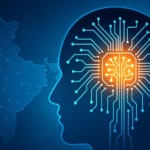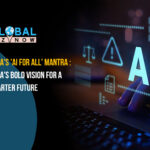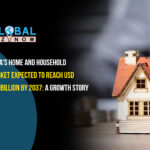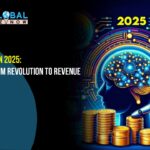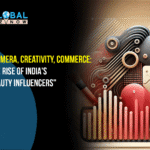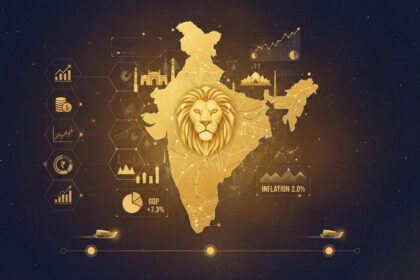A.R. Rahman’s Le Musk and the Future of Extended Reality
Virtual reality(VR) and augmented reality (AR) are not merely science fiction anymore. Today, as these technologies get integrated rapidly into almost every industry and change the way humans interact with their environment, the collective promise of such immersive technologies is often referred to as Extended Reality (XR), which is expected to revolutionize everything from entertainment and healthcare to education and manufacturing. The possibilities of XR technology stretch towards a limitless horizon in looking into the future when emerging applications blur the lines of how we work and play, and blur again the lines of how we define reality itself.
One of the great examples of XR reshaping creative fields is through the work of legendary music composer A.R. Rahman, whose boundary-pushing music and technology led to him entering the world of VR with his groundbreaking film, Le Musk (2022). Based on an innovative experiment in multi-sensory storytelling, Le Musk is a completely immersive experience that interconnects the use of VR, music, scent, and motion. The project reflects the enormous scope for XR technologies in amplifying traditional storytelling through leading-edge digital experiences. For his visionary work, Rahman was honoured with the XTIC Award 2024 for Innovation by the Experiential Technology Innovation Centre, IIT Madras.
The XTIC Award is bestowed on individuals and projects that have made great contributions to advancing immersive technologies and global storytelling. The award was conferred at India’s first XR Summit in November 2024 by Professors Steven and Anna LaValle, co-inventors of the Oculus Rift and visiting faculty at IIT Madras. XTIC as a global research hub dedicated towards development in VR, AR and haptics, is playing a crucial role in pushing frontiers of XR research and its applications across different sectors.
Expanding Horizons: The Scope of XR Technology in the Future
While Rahman’s work is an example of XR’s transformative power in the arts, VR and AR reach far beyond entertainment. There is a great future for VR and AR, and it has the potential to revolutionize several key sectors:
1. Entertainment and Media
XR has already begun to transform the entertainment industry, giving users very immersive experiences. Virtual reality is changing the face of gaming, with a fully interacting world whereby players experience digital environments as if real. VR is also used to create virtual concerts, immersive films, and live events in ways that get fans closer to the action. AR is revolutionizing the media landscape as it offers interactive ads and media experience, wherein the audience can engage in new and striking ways with the content. As the creators of content keep exploring XR, the future of storytelling will merge into a digital, physical, and emotional experience, just like in Rahman’s Le Musk.
2. Education and Training
XR technologies are changing our way of learning and training. Such learning in complex environments can be done with a real feel-through experience for students and professionals by recreating it in a controlled environment with safety. For instance, medical students can simulate surgeries or learn the anatomy of human bodies through 3D models in VR. AR enhances traditional education by overlaying content onto physical objects to provide immediate access to supplements or interactive lessons. The same goes for other streams of training as XR technologies enable the creation of real-world experience in manufacturing, aviation, and military operations in a risk-free manner.
3. Healthcare
In the healthcare sector, XR is already creating better training modules and is providing better patient care. VR is making surgeries much more simpler by providing virtual training for performing complex procedures in a virtual environment.AR is similarly useful in surgery, as it implores surgeons with real-time data . Apart from providing medical care, VR is also employed in mental health care such as to help deal with PTSD and anxiety patients. This is done by immersing patients in therapeutic environments that induce relaxation and healing. The possibilities of XR in healthcare are immense as there will be no dearths of new methods of treatment as well as new ways of improving the patient experience.
4. Retail and E-commerce
The retail industry is one of the biggest beneficiaries of XR technologies. Virtual reality offers the customers the option to try before they buy: trying on clothes, touring a property, or exploring a car showroom. AR is improving in-store experiences as customers see product information or try out items in a real-world context through their smartphones or AR glasses. With the increased popularity of e-commerce, one is likely to witness XR as one of the bridges connecting online shopping to physical counterparts, providing consumers with more informed choices in a more engaging way.
5. Real Estate and Architecture
It changed the way people do real estate and architecture by having virtual walkthroughs of properties and design simulations. Would-be buyers can walk through homes or commercial spaces without ever having to be there via VR, thus saving precious time and opening up larger pools of potential buyers for these properties. Architects can now study three-dimensional visualizations of their designs before breaking ground. AR is helping architects, construction teams to overlay digital models over physical space and thus visualize and make decisions in real time better.
6. Industry and Manufacturing
Both worker training and operational efficiency are improved with XR in manufacturing. Using VR simulates dangerous or costly situations in a safe virtual space when training workers on complex machinery and processes. AR helps increase productivity on the shop floor by giving real-time information or guidance by placing it in the worker’s field of view from an instruction manual. As the technology of XR advances, it will help in optimizing supply chains, enhance product designs, and make remote maintenance of machinery and equipment possible.
7. Tourism and Hospitality
XR technologies are changing the face of tourism and hospitality to create opportunities for virtual travels into destinations, almost as if one were to travel before booking their trips. While VR can offer an immersive tour in historical landmarks or exotic locations, with the help of AR, it is possible to superimpose digital information over the physical attraction on site, changing how people travel, how accessible the travel experience becomes, and more personalized.
8. Automobiles and Transportations
XR helps to automate the design, manufacturing, and UX in the automotive world. VR enables carmakers to build very accurate simulations of automobiles, simulating everything from aerodynamics to in-car UI design before building a single prototype. AR enhances in-car experience, heads-up displays of navigation, speed, and other essential information directly onto the windshield, while safety, navigation, and passenger engagement will continue to improve through the power of autonomous driving technology.
9. Defence and Military
The use of XR in defense and military applications is training soldiers in quality combat simulation at zero risk of physical danger. On VR, soldiers can simulate tactics and decision-making in high-pressure environments; AR complements a soldier’s situational awareness by giving them real-time information on the battlefield. Immersive technologies also apply to the remote maintenance and troubleshooting of military equipment; and all soldiers are battle-ready at all times.
In essence, extended reality is no longer a science fiction but an emerging reality that’s transforming diverse sectors across the spectrum such as entertainment and healthcare. Pioneering projects like A.R. Rahman’s Le Musk, along with emerging applications of VR in medical training and AR for shopping, are demonstrating how XR will redefine our interactions with the world around us.. The technology has vast potential to upgrade human experiences and industries, with emerging applications that will continue to push the limits of what’s possible. As the technology grows, it will undoubtedly reshape all these ways of learning, working, creating, and even experiencing the reality itself. The future of XR is not about an immersive digital world; rather, it opens up a more interconnected, richer, and dynamic real world wherein the digital and physical coexist perfectly.








